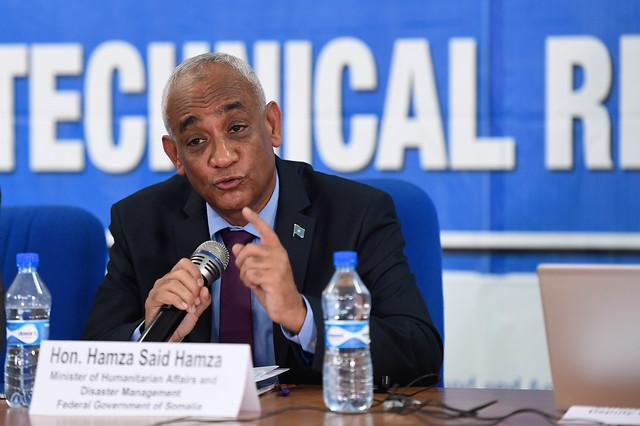Mogadishu – Late and erratic rains during Somalia's 2019 Gu cropping season, which runs from April to June, coupled with low river levels, have led to the poorest cereal harvest since the 2011 famine – and threaten an already fragile food security situation in the country.
According to the 2019 post-Gu data gathered by the United Nations and partners, cereal production was up to 70 per cent below average in southern Somalia for the 2019 Gu cropping season. The resulting shortfall is linked to abnormally high prices of sorghum observed throughout the season.
At a media launch today, the report – the Somalia 2019 Post Gu FSNAU FEWS-NET Technical Release – indicates that, in the absence of humanitarian assistance, up to 2.1 million people across Somalia face severe hunger through December 2019, bringing the total number of Somalis expected to be food insecure by year's end to 6.3 million.
Climatic shocks coupled with widespread poverty and vulnerability are key drivers that have trapped millions of Somalis in severe hunger and malnutrition. An estimated 2.6 million people remain internally displaced across the country, either scattered among host communities in rural areas or living in formal and informal settlements on the outskirts of urban centres.
In addition, widespread malnutrition persists across the country and one million children are projected to be acutely malnourished over the next year, including 180,000 who are likely to be severely malnourished if humanitarian interventions are not scaled up.
Large-scale catastrophes unnecessary
“Climatic shocks exacerbate needs. However, these shocks do not have to lead to a large-scale catastrophe. We must continue to work collectively to strengthen the capacity of Somalia to withstand these climatic shocks and identify durable solutions,” said Somalia’s Minister of Humanitarian Affairs and Disaster Management, Hamza Said Hamza, at the launch of the report.

“As we collectively advocate for and respond to urgent and acute humanitarian need, we must continue to invest in efforts to identify durable solutions,” he added.
The next Deyr cropping season, which runs from October to December and which is expected to be wetter than normal in most areas, will be crucial to avoid a deterioration of the food security situation in Somalia. The rainfall forecast indicates 45 to 55 per cent probability of rains being above average in most parts of the country.
This amount of rainfall will benefit pastoral and agro-pastoral communities. However, it is expected that the rains will likely cause flooding along the country's main Juba and Shabelle rivers which, in turn, can seriously damage crops and affect cereal production.
Against this backdrop, the humanitarian operation for Somalia remains under-funded with the 2019 Humanitarian Response
Plan so far having received just $487 million – less than half the amount required. Linked to that, the Federal Government of Somalia and humanitarian community have launched a so-called Drought Impact Response Plan (DIRP) that covers the months June through December 2019.
“I thank the donor community for the swift support for the DIRP, which enabled humanitarian agencies to scale-up response and keep one million people out of acute food insecurity through September 2019,” said the acting UN Humanitarian Coordinator for Somalia, George Conway, at the launch.
“However, the DIRP is currently just under 50 per cent funded and without additional resources and sustained collective response, 2.1 million people will face severe food insecurity through December,” he continued. “Humanitarian partners stand ready to respond, but they cannot do so without sufficient resources. I urge all donors to continue to step up support to enable the provision of life-saving assistance to the large numbers of people in Somalia who are in dire need of assistance.”






